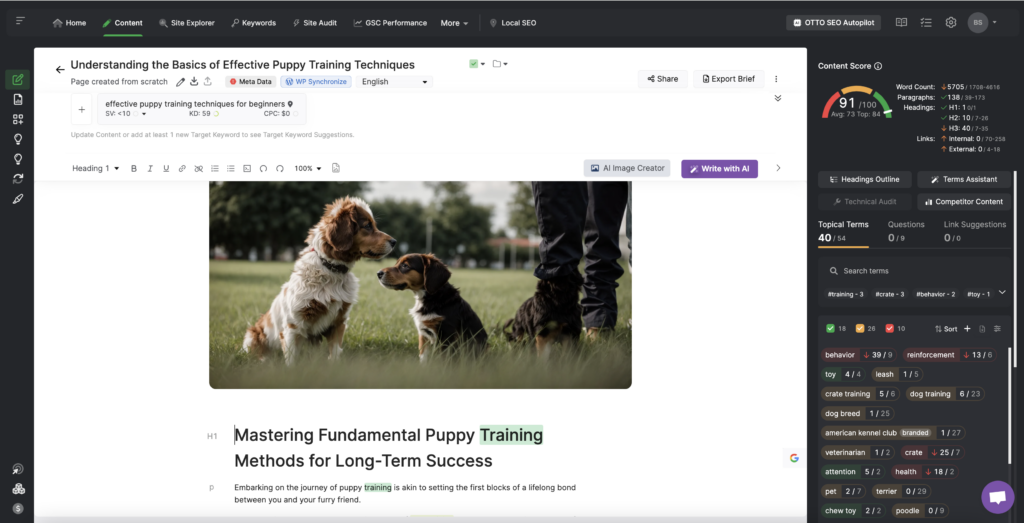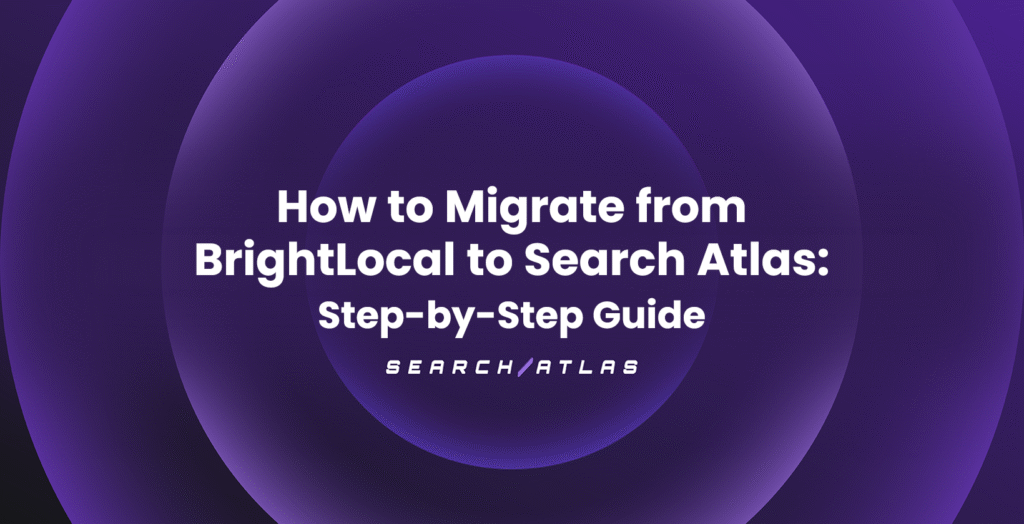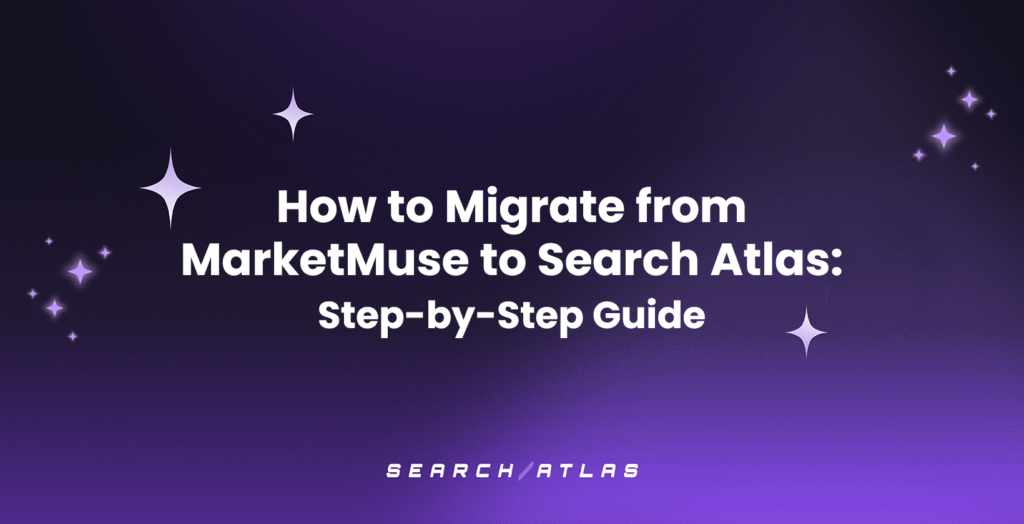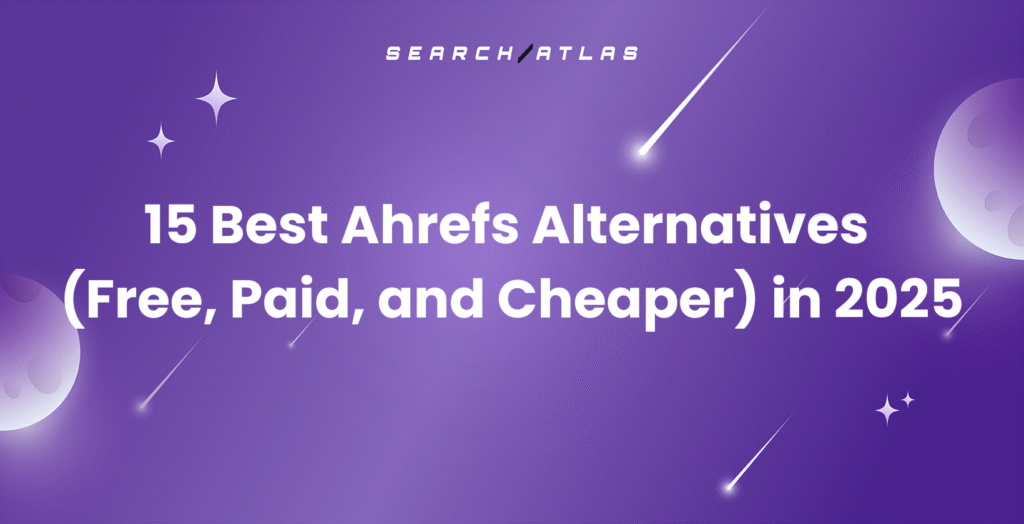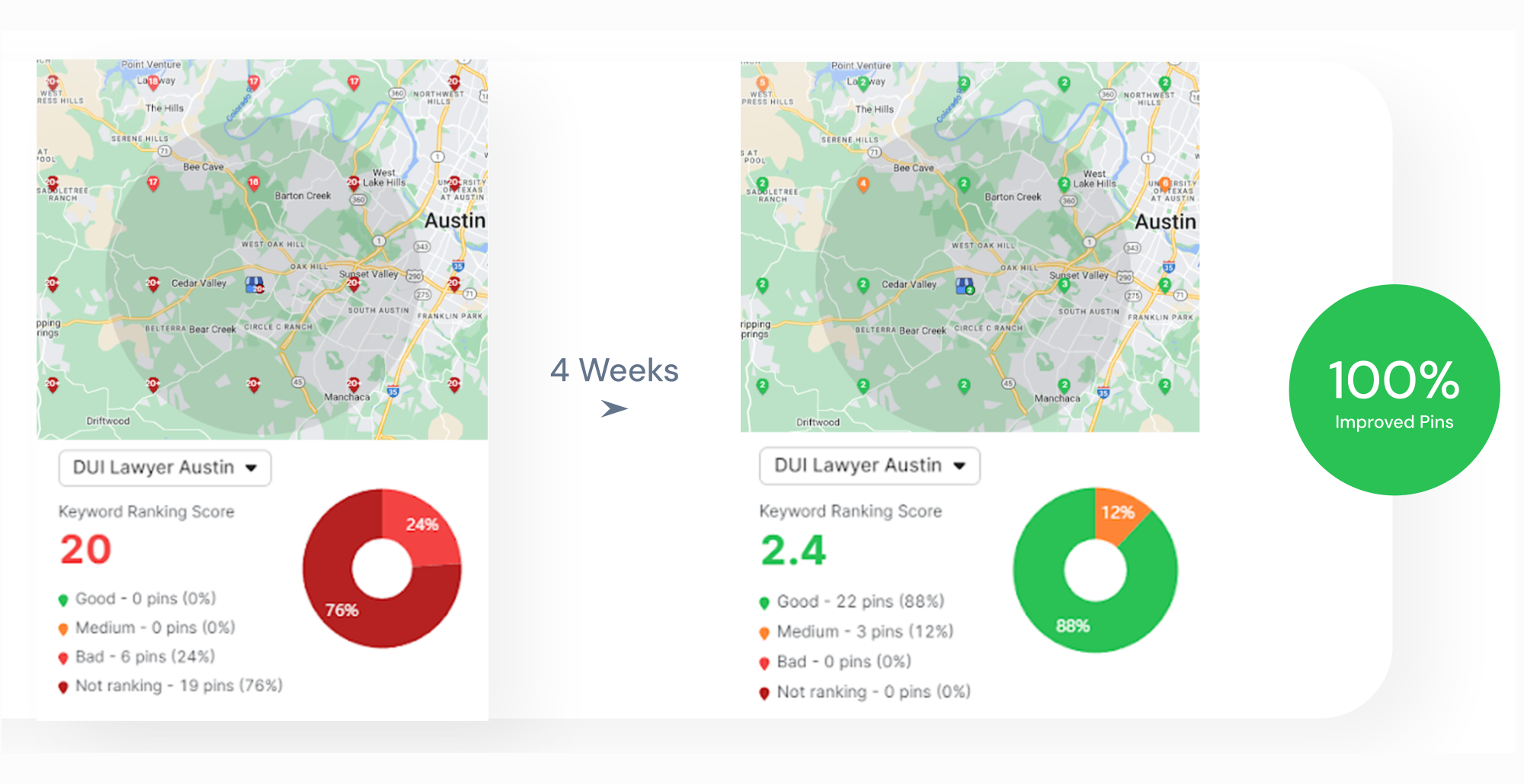The days of stuffing keywords into a page and calling it SEO are long gone. Back then, tossing in a few backlinks was enough to get by.
But today, search engines and users expect more. Enter topical map SEO, a smarter way to organize your content for better rankings and long-term success. 🌟
When people search online, they’re not just typing a few scattered keywords. They’re asking complete questions and looking for in-depth, well-structured answers. Search engines have evolved to understand topics as a whole, not just isolated phrases.
That’s why organizing your site around an interconnected topical map has become the key to building authority and driving organic traffic.
Now, let’s break down what topical map SEO is.
What Is Topical Map SEO?
Topical map SEO is a strategic way to structure your website’s content so that search engines and users understand your expertise’s depth. Instead of creating scattered, disconnected articles, a topical map helps you organize content into a logical hierarchy of topics and subtopics.
This approach builds authority, improves rankings, and ensures your site comprehensively covers a subject.
Think of it like designing a fitness program. If your website is about strength training, a well-structured topical map wouldn’t just have “Beginner Workouts.” It would break into subtopics like “Upper Body Exercises,” “Leg Day Routines,” and “Recovery & Nutrition Tips.”
Each section connects to the bigger picture. 🖼️

What Are the Benefits of Topical Maps?
Topical map SEO organizes your content into clear topics and subtopics, making it easier for both search engines and users to understand your site’s expertise. This structure signals to search engines that your site covers a subject thoroughly, improving rankings and SEO user experience.
Some benefits of topical map SEO include:
- Improved Crawlability: Search engine bots can easily navigate and index your content when it’s structured logically.
- Increased Relevance: Helps search engines understand the context of your content, leading to better rankings for specific keywords.
- Better User Experience: A clear structure makes it easy for visitors to find what they need, increasing engagement.
- Enhanced Internal Linking: Organizing your content makes it easier to link related pages, improving your site’s SEO.
- Higher Content Visibility: Unique, well-organized content is more likely to be discovered by users and search engines.
Topical map SEO helps build topical authority by organizing content into clear, relevant topics and subtopics, signaling to search engines that your site is a comprehensive, trusted source on a subject.
What Is Topical Authority?
Topical authority is a strategy that positions your website as an expert in a specific subject or niche. It involves covering the full spectrum of a topic, making you the go-to resource for that subject.
When search engines see that your site comprehensively addresses a subject, it boosts your credibility and helps you rank better for related keywords.
What Are the Key Components of Topical Map SEO?
A topical map helps structure your website’s content by organizing it into clear, connected themes. The key components of a topical map are nodes, clusters, and the hierarchy of topics.
Nodes and Clusters
Nodes are individual pieces of content, like blog posts or articles, that make up the map. These are the basic building blocks. Clusters are groups of related nodes around a central theme or topic, making your content easier to navigate and understand.
This structure creates a cohesive web of information that links content, making it easier for both users and search engines to find relevant pages.
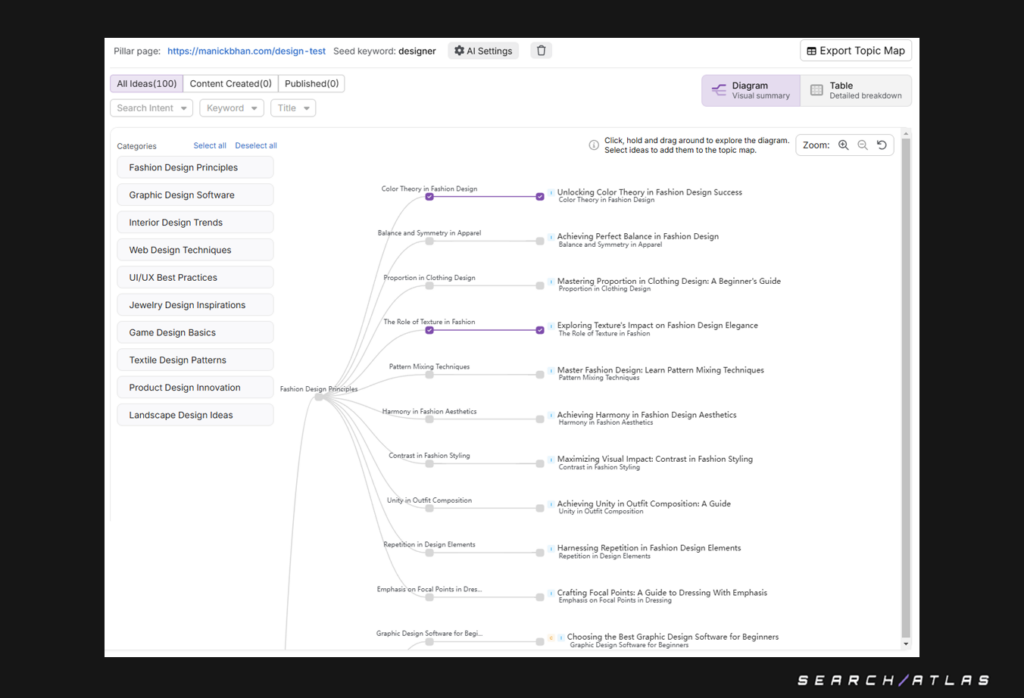
The Hierarchy of Topics
A topical map’s hierarchy starts with broad, pillar topics that break down into more specific subtopics. This mirrors how people naturally search for information, moving from general ideas to more detailed answers.
This layered structure not only helps users find what they’re looking for but also assists search engines in understanding and ranking your content.
7 Steps For a Complete Topical Map SEO Strategy
We will walk you through seven simple steps to build a topical map, and at the end, we’ll show you how to automate the whole process. So whether you’re the DIY type or you’d rather let the tools do the work, stick around!
1. Identify Your Site’s Main Topic to Drive Focused Content Creation
The first step is figuring out the core topics that align with your business and what your audience actually cares about. At this stage, ask yourself:
- What’s my website’s main focus?
- What do I want to be known as an expert in?
- What themes tie all my content together?
- What limits the scope of my business?
By answering these, you’ll have a strong foundation for your topical map. Next, we’ll dive into how to structure your topics into a clear, organized hierarchy.
Here are some tips on how to find your main topics:
- Use a tool to find ideas: A topic ideas generator helps marketers find relevant topics by entering a keyword and generating a list of ideas for their content calendar.
- Understand user intent: Understanding keyword intent helps you reach the right audience, whether they’re researching, comparing, or ready to buy.
- Spot content gaps: Analyze competitors’ keywords to find gaps in your content and answer unanswered audience questions to build authority.

- Group keywords into thematic clusters: Instead of targeting single keywords, use a content planner to organize related terms into structured clusters.
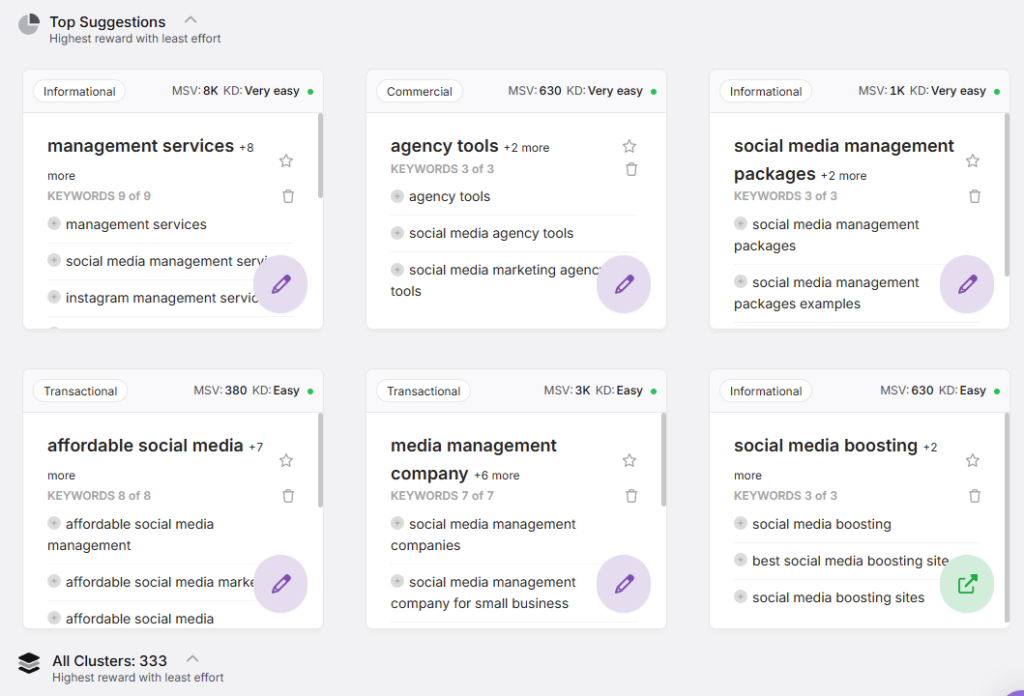
2. Feed Topics Into a Topical Map Tool to Build Your Strategy
This step is all about finding the right supporting and sub-topic ideas to cover all angles of your main topic. It’s the foundation of your topical map:
Use a topical map generator to create a content roadmap for your team or clients. By organizing keywords into clusters, incorporating long-tail keywords, and crafting article titles, your topical map sets the stage for building authority in your main topic.
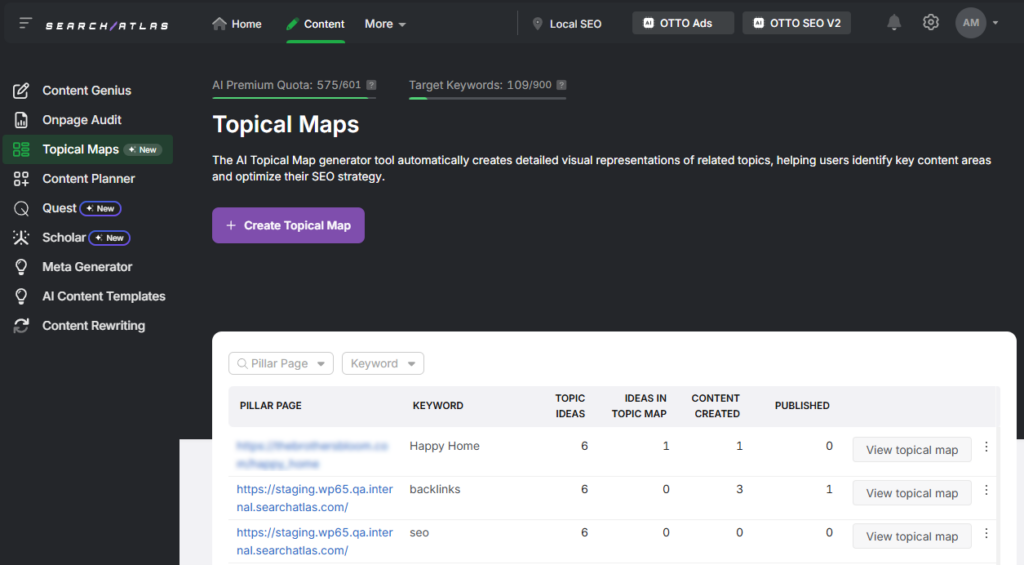
Start by picking your pillar page, the central hub for your topical map, like a page focused on your core topic. Then, choose the target keyword, your primary term that defines the topic.
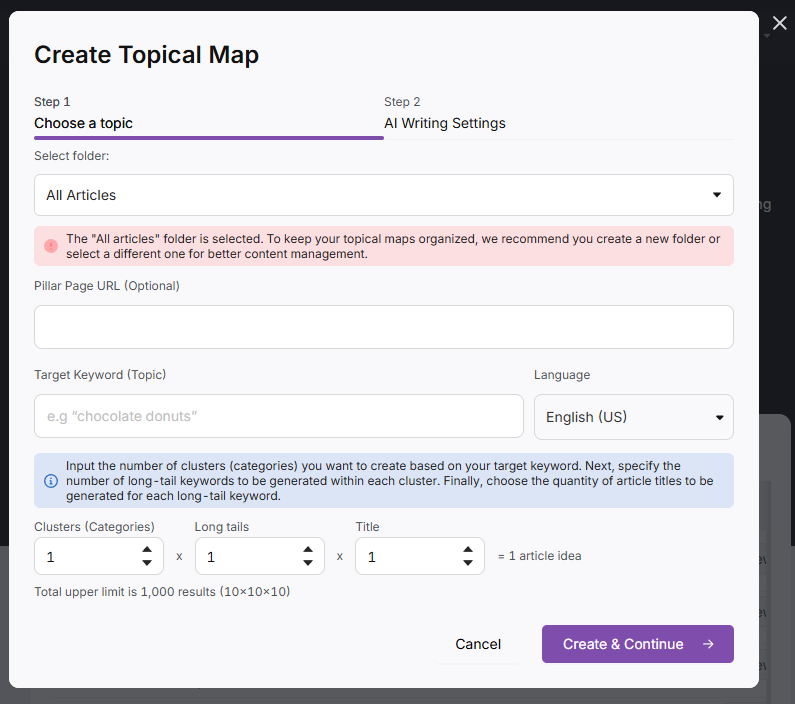
Next, choose how many elements will structure the content of your topical map:
- Clusters group related topics under the main idea (e.g., “SEO Strategies” in Digital Marketing).
- Long-tail keywords address specific, niche queries within those clusters (e.g., “best SEO tools for small businesses”).
- Titles define content pieces to ensure they’re clear and aligned with search intent (e.g., “How to Write Engaging Blog Posts That Rank”).
These elements can be adjusted later, and they’ll be automatically generated. Just pick how many you want for your map.
You can easily share it in a spreadsheet so writers can create high-quality content that ranks in search engines.
3. Configure AI Settings to Customize Your Content
Now set up your AI settings to make sure your map is tailored to your specific needs. A good tool should allow you to customize the map to match your website’s goals, audience, and SEO objectives.
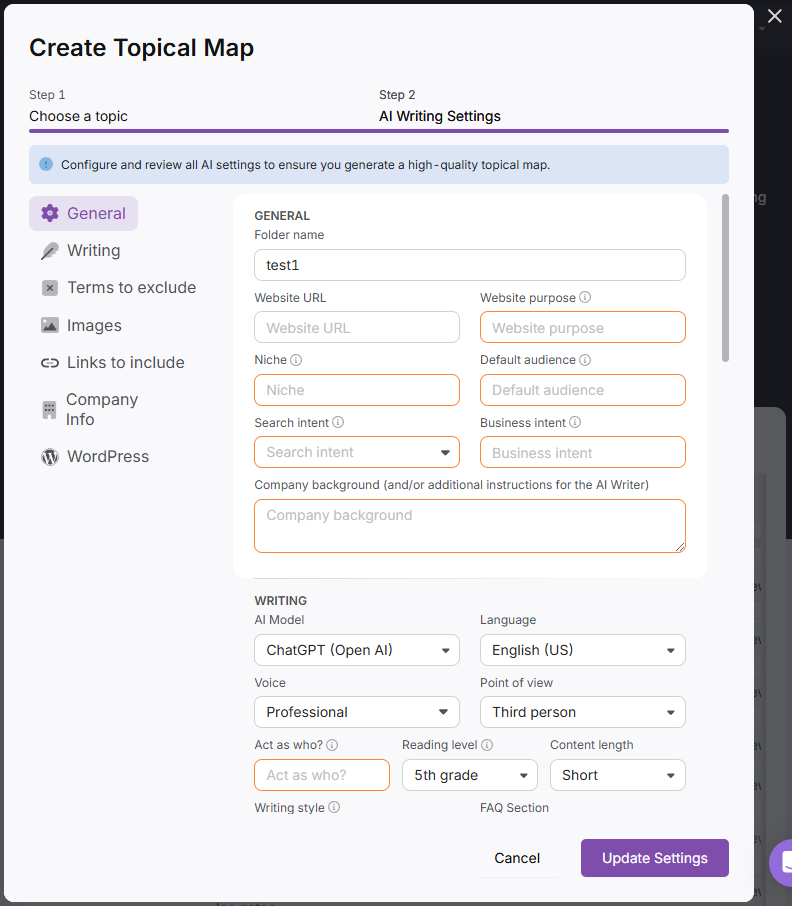
You can input key details like your site’s purpose, niche, target audience, and the type of search intent you’re aiming for. You can also adjust the AI’s tone, voice, reading level, and model to align with your brand’s style.
These settings can be tweaked later, but getting them right from the start helps when you begin creating content.
4. Assess Topic Value to Maximize Impact
This step is what sets our topical mapping process apart.
A common mistake people make when building a topical map is collecting a huge list of ideas without considering if they’ll actually help the business.
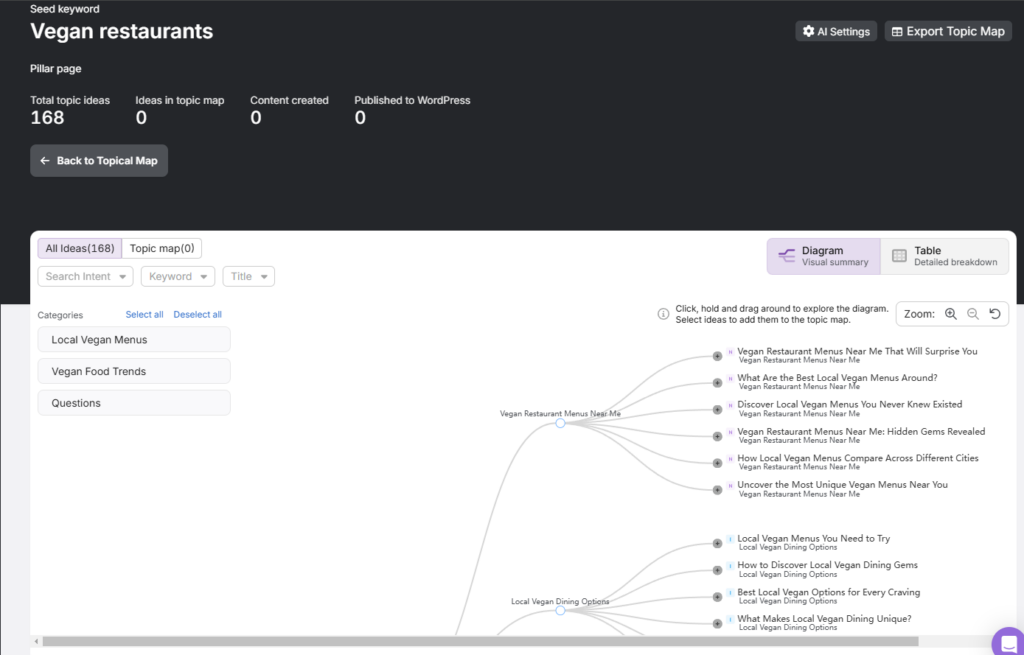
To make this work, you need to be selective—don’t just add anything that comes your way.
For example, if you run a vegan restaurant, it wouldn’t make sense to include topics like:
- Locations: Vegan Restaurants in New York, Vegan Restaurants in London, Vegan Restaurants in Tokyo.
- Menu Items: Vegan Burgers, Vegan Smoothies, Vegan Desserts.
- Events: Vegan Cooking Classes, Vegan Wine Tastings, Vegan Pop-Up Events.
- Services: Vegan Catering, Vegan Meal Delivery, Vegan Meal Prep Services.
- Reviews: Best Vegan Restaurant Reviews, Vegan Restaurant Critiques, Vegan Restaurant Awards.
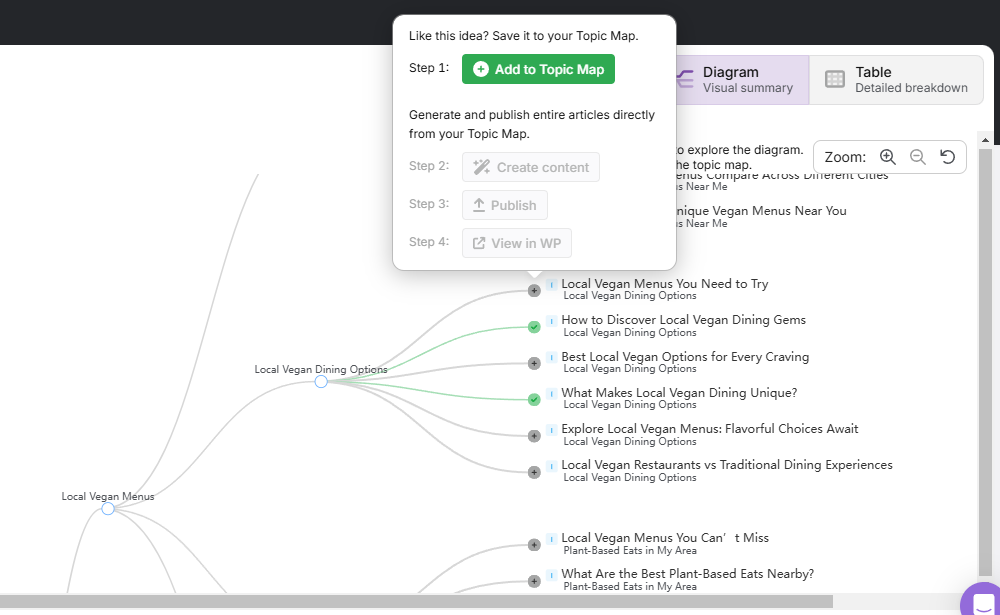
While all of these are related to vegan restaurants, they target different intents and would suit different business models. Even a leading vegan restaurant brand wouldn’t try to cover all these; it simply doesn’t fit.
5. Integrate Topical Maps to Align With SEO Goals
The tool can take your topical map and generate content that perfectly aligns with your keywords, chosen topics, and even the tone of voice you want to use.
It also creates images to enhance your content, ensuring everything from the language to the visuals is on point.
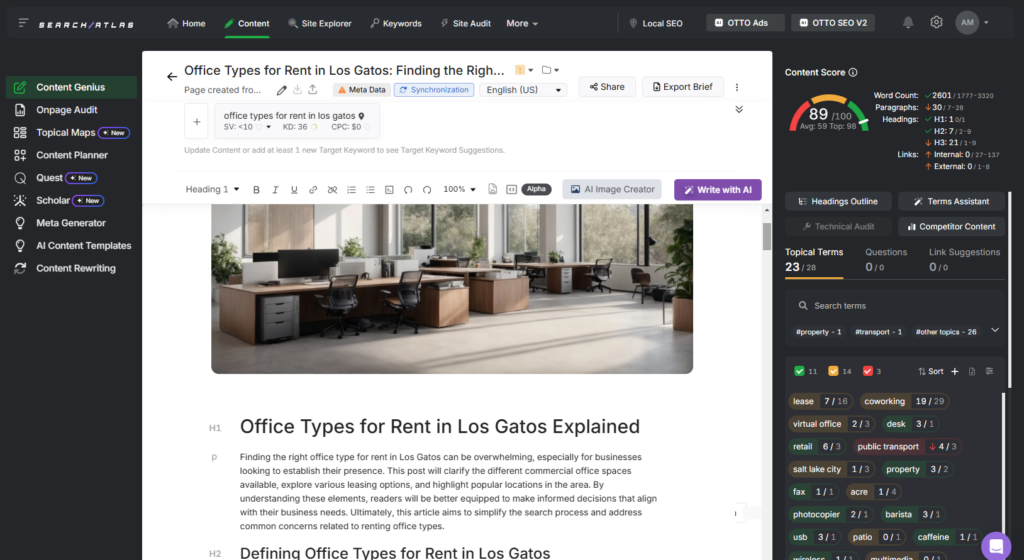
Remember to perform regular updates and audits to keep things fresh, ensuring your content remains relevant and aligned with both your audience’s needs and the latest search trends.
Part of this ongoing strategy involves performing a content gap analysis. This process identifies competitors’ keywords and areas where your content or competitors’ content might be lacking. By filling in these gaps, you can seize opportunities to create valuable, highly relevant content.
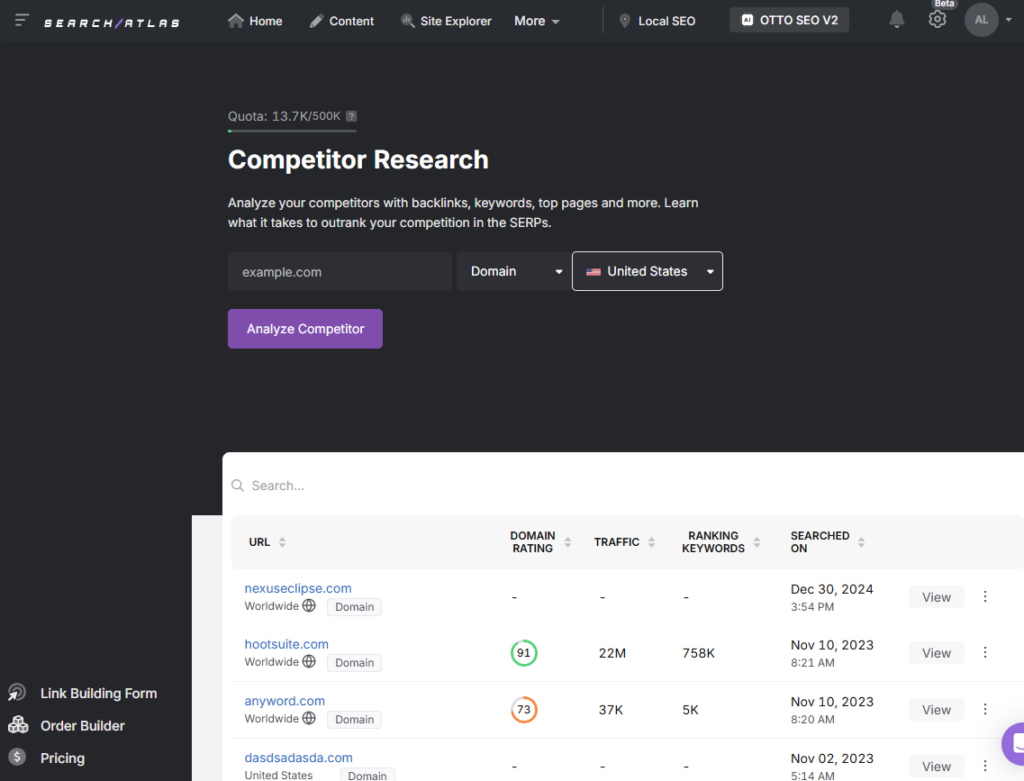
Your editorial calendar plays a huge role in executing your topical map.
By scheduling content strategically, you’ll maintain a steady flow of articles that bolster your topical authority. This ensures you’re consistently addressing all key topics and subtopics.
6. Optimize the On-Page SEO to Fine-Tune the Pages
Next, optimize your site’s content and structure. This means ensuring every piece of content fits seamlessly into your map, using internal links to connect related topics, and tweaking your site’s layout so it’s easy for search engines to crawl and for users to navigate.
Use an on-page SEO audit tool that lets you fine-tune things like headings, meta descriptions, and keyword placement.
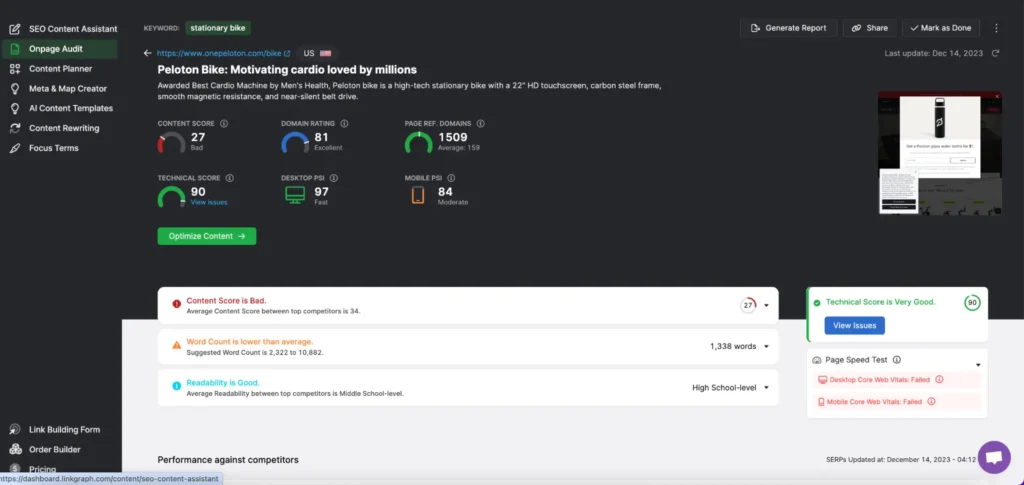
These elements should follow the structure of your topics and incorporate the right keywords in a natural way, helping your content stand out and get clicked. Internal linking is another game-changer.
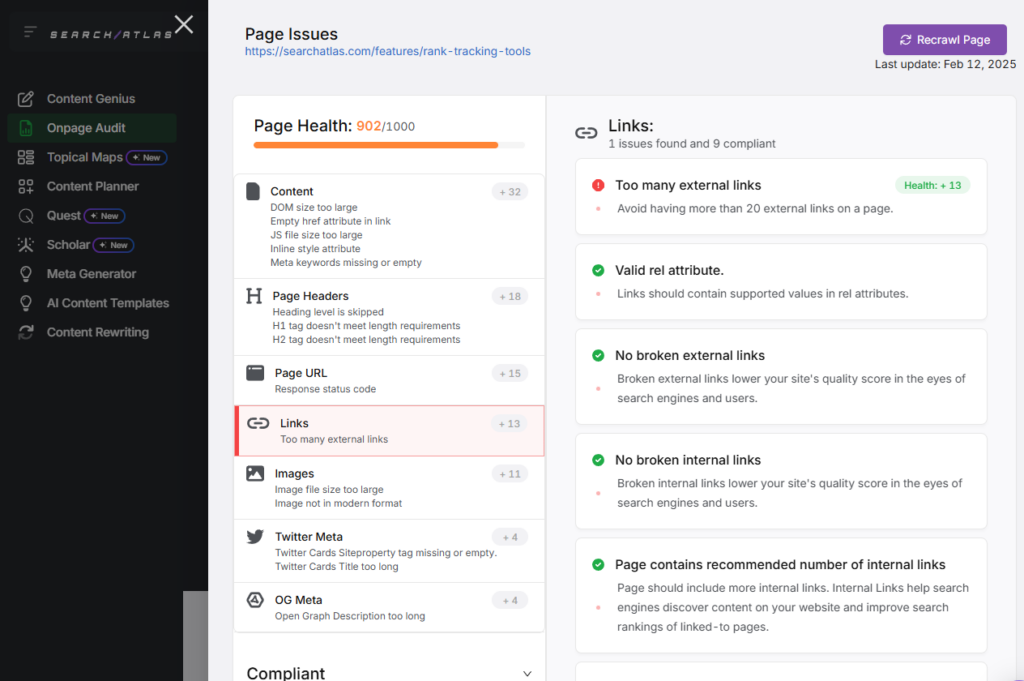
By linking relevant content together, you’re showing search engines how everything connects, which strengthens your site’s authority on those topics. Plus, it helps users easily find more of what they’re looking for, keeping them engaged and improving their experience.
7. Monitor Results to Refine Strategy
The final step in mastering your SEO strategy is to monitor the results, and the best way to do this is with an automated, customizable reporting tool.
These tools integrate Google Search Console (GSC), Google Analytics (GA4), and other custom tools to give you a clear, real-time picture of how your content is performing.
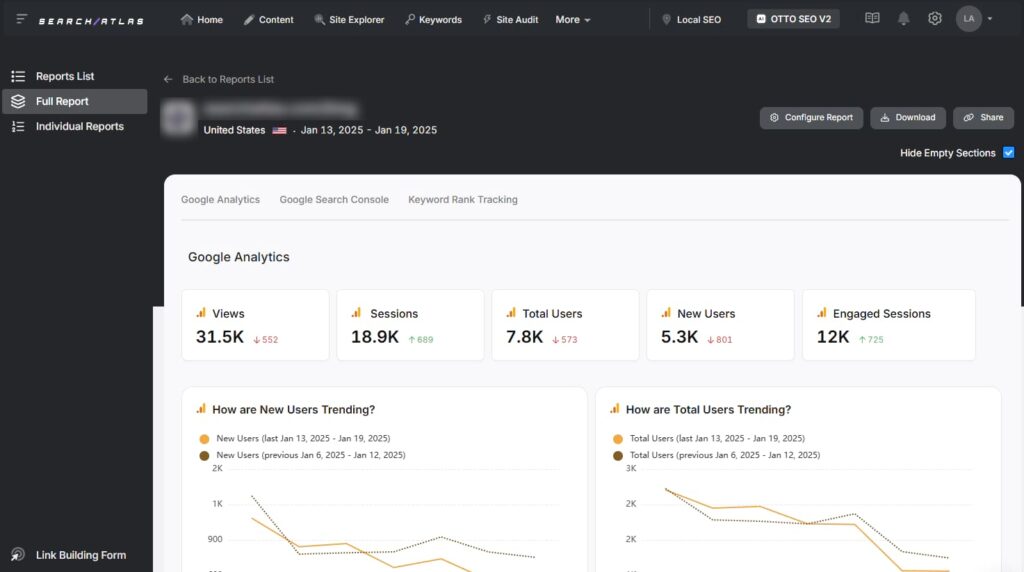
As you review your reports, you’ll spot the wins, like improved rankings and increased traffic, as well as areas that need tweaking, such as high bounce rates or lower engagement on certain pages.
How to Automate All of Topical Map SEO Strategy
OTTO is your AI SEO assistant, designed to automate your entire SEO process. Once installed on your website and connected to your Google Search Console (GSC) and Google Business Profile (GBP), OTTO creates a custom AI model based on your business.
It then automatically generates a topical map, ensuring your content aligns with the right themes and targets the best keywords, effortlessly.
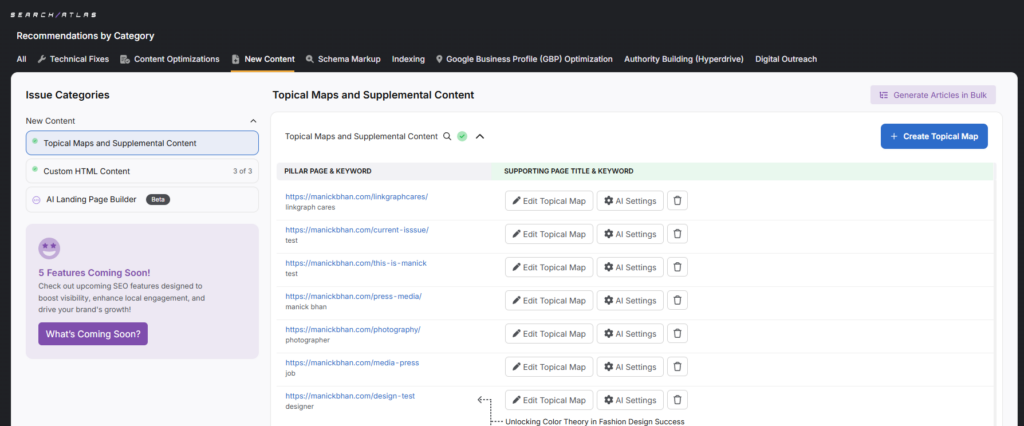
OTTO also automates technical SEO fixes, on-page optimizations, link building, and content updates, saving you time and money.
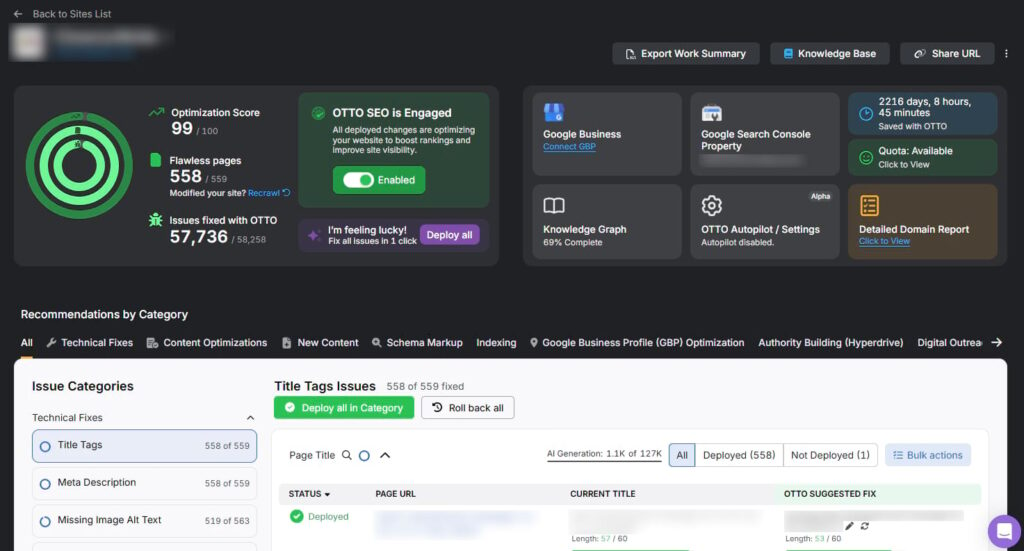
On average, a single OTTO project saves 187 days of work and $134K in resources. Want to see how OTTO has helped businesses and agencies save in 2024? Check out our 2024 in review blog for more.
Embrace the Future of SEO with Automated Topical Map SEO
Creating a simple keyword list is so yesterday, and even relying on topic clusters is becoming a thing of the past. Google has gotten way smarter, focusing on your site’s topical authority.
To truly succeed, you need to dive into topical map SEO. But manually building these maps or using other tools that spit out confusing lists doesn’t help.
That’s where Search Atlas comes in. It generates a clean, visual topical map and creates content or outlines automatically, saving you tons of time and effort. 😎
And if you’re using OTTO? Well, it handles all the heavy lifting: On-page optimizations, technical fixes, link building, and more, so you can focus on what really matters.
Why keep doing things the hard way? Try building your topical map with our free trial! No strings attached, cancel anytime.


